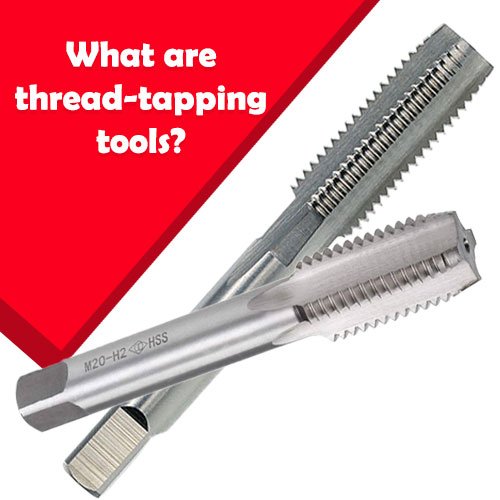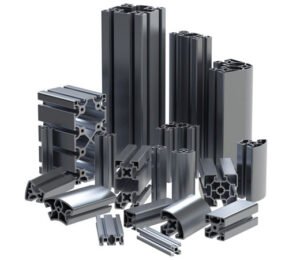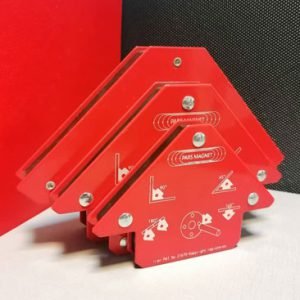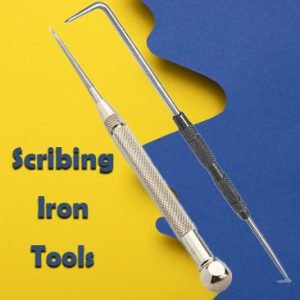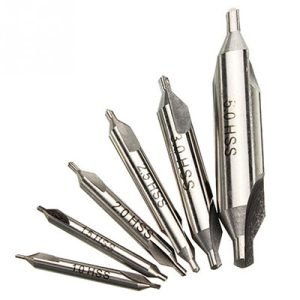What does tap mean in machining?
To know about the tapping tools is better to start with the tap meaning. In machining, the term “tap” refers to a cutting tool used to create internal threads in a previously drilled hole. Taps come in various sizes and thread pitches and are designed to cut threads into materials like metal, plastic, or wood. The process of using a tap to create threads is called tapping.
Tapping is a common machining operation used to create threaded holes for bolts, screws, or other fasteners. It’s an essential process in industries such as manufacturing, automotive, aerospace, and construction.
What are thread-tapping tools?
Thread-tapping tools are special tools used in machining to make threads inside holes that have already been drilled. Imagine you have a piece of metal with a hole in it, and you need to put a screw in there. Thread-tapping tools are what you use to make the threads inside that hole so the screw can fit in snugly and securely. There are different types of these tools, some you use by hand, and others that work automatically with machines. They’re really important in making things like machines, cars, and buildings because they help put everything together tightly and securely.
In simpler terms, thread-tapping tools are like magic wands for making holes in metal that can hold screws. They’re used to carve tiny grooves inside those holes, called threads, which grip onto screws tightly. This way, when you put a screw into the hole, it stays in place firmly. Whether it’s a small DIY project or a big manufacturing job, these tools make sure everything stays put where it’s supposed to be.
what is center drill: everything you need to know about centre drilling
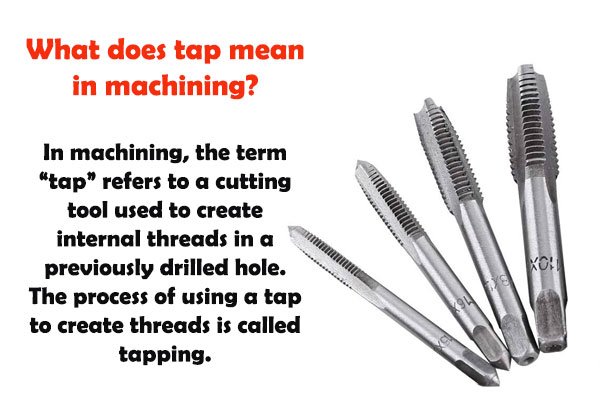
How to use tap?
Using tapping tools involves several steps:
- Prepare the Workpiece: Begin with a workpiece that has been drilled to the appropriate diameter for the desired thread size. Ensure the workpiece is securely held in place on a stable surface or within a vise.
- Select the Right Tap: Choose the correct tap size and type for the desired thread. Consider factors such as thread pitch and depth requirements. Refer to thread charts or specifications for guidance.
- Align the Tap: Position the tap perpendicular to the surface of the workpiece and align it with the drilled hole. Use a tap guide or center punch to help ensure accurate alignment.
- Start Tapping: Apply cutting fluid or lubricant to the tap and the workpiece to reduce friction and extend tool life. Begin turning the tap clockwise (for right-hand threads) or counterclockwise (for left-hand threads) with a tap wrench or appropriate tool.
- Apply Pressure: Apply steady downward pressure while turning the tap to guide it into the workpiece. Be careful not to force the tap too quickly, as this can cause it to break or damage the threads.
- Monitor Progress: Periodically back the tap out to clear chips and debris from the hole. Continue tapping until the desired depth is reached or until threads are fully formed.
- Inspect Threads: Once tapping is complete, inspect the threads for accuracy and quality. Use a thread gauge or similar tool to verify that the threads meet specifications.
- Clean and Debur: Remove any excess cutting fluid and burrs from the workpiece and tap. This can be done using a brush or deburring tool.
By following these steps carefully and using appropriate safety precautions, tapping tools can be effectively utilized to create accurate and reliable threaded holes in various materials.
Types of taps for threading
Here are some common types of taps used for threading:
- Taper Taps: Start threads gradually, aiding alignment.
- Plug Taps: Continue threading after taper taps, versatile.
- Bottoming Taps: Cut threads to the bottom of blind holes.
- Spiral Flute Taps: Efficiently clear chips during threading.
- Spiral Point Taps: Push chips forward for through-hole threading.
- Pipe Taps: Specifically for creating pipe threads, tapered for sealing.
These taps are selected based on factors like material, hole type, and desired thread specifications.
